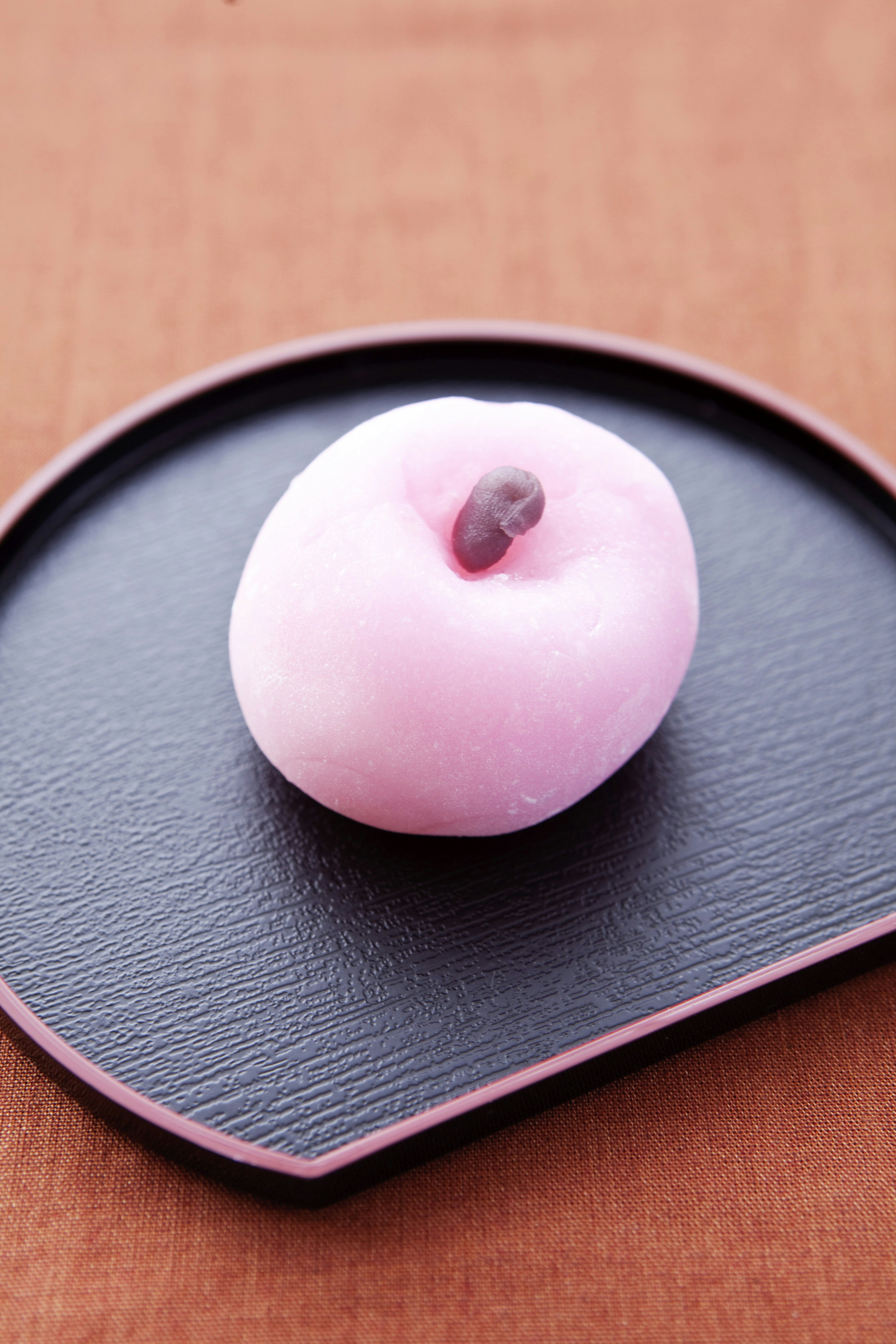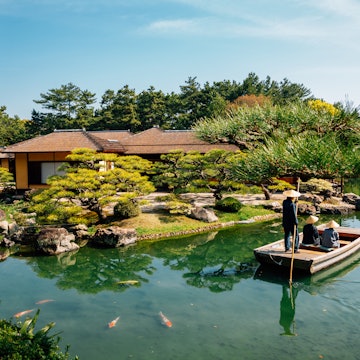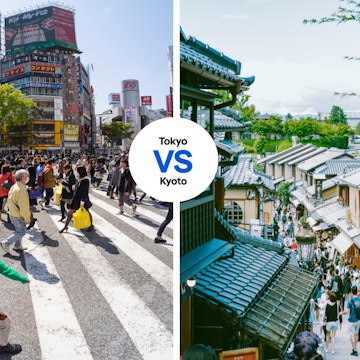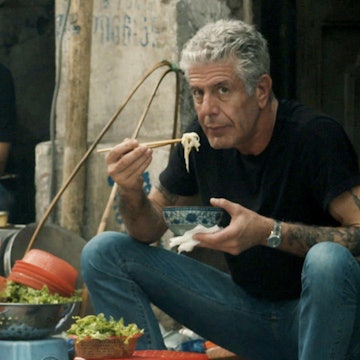

Ramen is but one of the tasty and inexpensive dishes on your Kyoto menu. Westend61 / Getty Images
Kyoto's cultural heritage as the ancient capital of Japan extends beyond its stunning temples and shrines to create a rich and sophisticated culinary tradition well worth exploring. From elegant kaiseki cuisine to imaginative tofu dishes and traditional tea and sweets, here’s our guide to the best places to eat in Kyoto.
Best cheap eats
Ippūdō
Ramen joint Ippūdō, round the corner from Nishiki Market, is so popular there's often a queue going out the door, and once you’ve eaten here it's easy to see why. The noodles are the perfect texture, served in a rich broth with a variety of toppings to choose from. Get one of the special sets with bite-size gyoza dumplings for a low cost yet filling meal.
Omen
Just five minutes from Ginkaku-ji temple, this traditional restaurant specialises in thick, chewy udon noodles. You can have these hot or cold, and they come served as part of a set with soup and vegetables, which you can mix however you like. There’s also plenty of a la carte dishes at Omen, such as grilled chicken, sushi and tempura, all for a great price.
Giro Giro Hitoshina
If you want to try Kyoto’s famous kaiseki ryori without breaking the bank, then Giro Giro Hitoshina is the place to go. In a livelier and far less formal environment, the chefs serve up a modern version of this multicourse cuisine. Expect inventive dishes and good-quality ingredients, executed well and for a reasonable price. Reservations are recommended.
Read more: The best day trips from Kyoto

Best high-end dining
Kitcho Arashiyama
Those wanting to sample the absolute best of Kyoto’s kaiseki cuisine need look no further. At the elegant Kitcho Arashiyama restaurant, exquisitely presented dishes made using the finest seasonal ingredients are served in private tatami rooms overlooking the gardens. Each one arrives separately, looking as much like a work of art as a meal. Reservations are essential, and should be made well in advance.
Kikunoi
A mecca for foodies, Michelin-starred Kikunoi, just south of Maruyama Park and Yasaka Shrine, represents the ultimate in high-end Japanese dining. The menu is a parade of luxurious little dishes that showcase the current season. The attention to detail here, which covers not just the food but also the tableware and decor, is second to none. Advanced reservations are, of course, required.
Hyōtei
With a 400-year history, Hyōtei is one of Kyoto’s oldest restaurants. Housed in a traditional building in the east of the city, the flavours and culinary techniques used reflect the restaurant's long heritage. The menu is fish-and-vegetable-centric, featuring impeccable ingredients sourced from local producers. Though not suited to everyone’s palate, it’s perfect for trying authentic Japanese haute cuisine.
Read more: Highlights of Kyoto

Best vegan and vegetarian
Shigetsu
Located in the grounds of Tenryū-ji temple in the beautiful Arashiyama district, Shigetsu serves the traditional Japanese Buddhist cuisine shojin ryori. This consists of a selection of exquisitely presented small dishes made using local, seasonal ingredients and no animal products. It’s a little pricey, but worth it for the quality of the food and the gorgeous surroundings to enjoy it in.
Ain Soph Journey
One of Kyoto’s newest vegan restaurants, Ain Soph Journey offers 100% plant-based meals including burgers, a creamy green spinach curry, and hearty mushroom hayashi rice stew. The best part, however, is its desserts. From a fudge-like chocolate gateau and rich creme brûlée to the wonderfully fluffy matcha tea pancakes, you're going to want to keep coming back until you've tried them all.
Choice
Located near Sanjo station, Choice’s menu is entirely vegan, and gluten-free too. Vegan cheese is made on site and it's used in the majority of the dishes, which include risotto, several pastas and taco rice. Cheese plates are also available, so you can sample all the different flavours, from smoky and rum raisin to koto, which is made using local herbs.
Read more: Kyoto and more: the highlights of Japan's Kansai region

Best teahouses
Kagizen Yoshifusa
This traditional sweet shop dates back to the Edo period, and is a Gion institution. It sells artistic wagashi confectionary, as well as other authentic desserts like warabi-mochi. This jelly-like confection is served drizzled in a black sugar syrup and dusted with kinako (roasted soy bean flour), and makes the perfect accompaniment to the matcha served in the tearoom out back.
Ippōdō
Ippōdō is one of the best tea shops in Kyoto, and its adjoining Kaboku Tearoom is a great place to discover the joy of brewing it for yourself. Its tea menu is extensive, featuring high-end gyokuro, roasted hojicha, and grassy sencha as well as matcha. These are served with intricately decorated, seasonal Japanese sweets to offset the tea's bitterness.
Motoan
This teahouse is attached to Marukyu Koyamaen, which sells some of the city’s best quality green tea. Not far from Nijō-jō castle, Motoan is serene and welcoming, with pretty views out over the garden. It offers a mixture of traditional Japanese sweets and western-style cakes and pastries with a Japanese twist to accompany its tea, such as the signature matcha Swiss roll.
Best tofu restaurants
Tōsuirō
One of Kyoto’s most famous culinary specialities is tofu, and you’ll be genuinely impressed by what the chefs at Tōsuirō can do with this humble ingredient. A number of different sets are available, with an assortment of tofu dishes along with other small plates like sashimi. In the summer there’s the option to enjoy kawayuka seating on the terrace overlooking the Kamogawa river.
Saga Tofu Ine
Saga Tofu Ine in Arashiyama offers a variety of creative set menus using its own homemade tofu. These include dishes such as sesame tofu, dengaku (tofu baked in miso), and agedofu (deep-fried tofu). Alternatively, if you just want a sweet treat, opt for the fluffy tofu and soy milk doughnuts, or tofu soft-serve ice cream flavoured with green tea.
Junsei Shoin
Part of the Nanzen-ji temple complex, Junsei Shoin specialises in yudofu – tofu simmered in broth – and yuba. The latter is tofu skin, made by skimming the top from gently cooking soy milk, which tastes much nicer than it sounds. Junsei allows the tofu’s natural flavour to speak for itself, and it’s worlds apart from what you find in western supermarkets.
You might also like:
Top 16 free things to do in Kyoto
The best Kyoto restaurants to try traditional Japanese food
Exploring alpine paths: the 5 best hikes in Kyoto
















